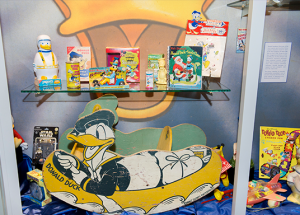

One pair is from The Huntington's collection, and the other is on loan from the Metropolitan Museum of Art.Ī fully illustrated catalog, Inspiring Walt Disney: The Animation of French Decorative Arts, by Wolf Burchard-the curator of the exhibition at the Metropolitan Museum of Art, where he is the associate curator in the department of European sculpture and decorative arts-is available at the Huntington Store. The centerpiece of this section is the first bird's-eye view illustration of Disneyland, drawn by Herbert Ryman under Walt Disney's guidance over one weekend in the fall of 1953, as well as the only two known pairs of so-called Tower vases, made by Sèvres around 1762–63 and reunited for the first time. While the fantastical buildings exist outside actual periods and styles, Disney's artists were heavily influenced by French and German architecture when creating their settings, particularly for the theme parks. Disney's satirical take on Rococo fashion will be explored alongside works from The Huntington's collection of macaroni prints-18th-century illustrations that poked fun at the extreme fashion worn by the upper classes at the time.ĭisney architecture is also examined, specifically the fairy-tale castles that are central focal points in many Disney movies and theme parks. The exhibition explores anthropomorphism and zoomorphism in 18th-century French literature and decorative arts, the interiors of the movie's enchanted castle, and the design and animation of the Beast and other characters. In 2011, The Huntington's conservation team restored the Walt Disney Archives' Sleeping Beauty prop book, several pages of which will be on view in the exhibition.Īnother part of "Inspiring Walt Disney" is devoted to Disney's most Rococo film, Beauty and the Beast (1991), famous for featuring inanimate objects that come to life-from the level-headed Mrs. The exhibition also highlights the medieval sources that Disney artist Eyvind Earle and his colleagues consulted for the style of Sleeping Beauty (1959). The Cinderella (1950) section spotlights the barrier-breaking female artists who managed to enter the creative realm of Disney Studios, especially the celebrated Mary Blair. The next sections of the exhibition focus on two early animated features. The exhibition suggests connections between the remarkable technological advancements of the Meissen and Sèvres porcelain manufacturers over the course of the 18th century and the cinematic innovations pioneered by Disney animators at the beginning of the 20th century. The concept of "Animating the Inanimate" is explored in the first section of the exhibition, which features French and German Rococo porcelain figurines alongside story sketches for The China Shop (1934), one of Disney's "Silly Symphonies." These types of whimsical porcelain figures, originally inspired by the pastoral scenes of French Rococo painter Antoine Watteau and his contemporaries, were brought to life by the first generation of Disney animators. Those visits became a profound source of inspiration for both himself and his studios they also sparked his passion for collecting and building miniature furniture and dollhouse furnishings, foreshadowing the kind of creativity he would exercise in the creation of new "worlds" through his theme parks and films. "Inspiring Walt Disney" highlights his art and architecture encounters during return trips following the war. It was then that he first became fascinated with Europe and European art.
#Walt disney world animation desk driver#
Walt Disney (1901–1966) had a deep affection for France, having served there as an ambulance driver following World War I.

The international traveling exhibition "Inspiring Walt Disney: The Animation of French Decorative Arts" explores the early inspirations behind Disney Studios' creations, examining Walt Disney's fascination with European art and the use of French motifs in Disney films and theme parks.Īpproximately 50 works of 18th-century European decorative art and design, many of which are drawn from The Huntington's significant collection, are featured alongside hand-drawn production artworks and works on paper from the Walt Disney Animation Research Library, Walt Disney Archives, Walt Disney Imagineering Collection, and The Walt Disney Family Museum.


 0 kommentar(er)
0 kommentar(er)
